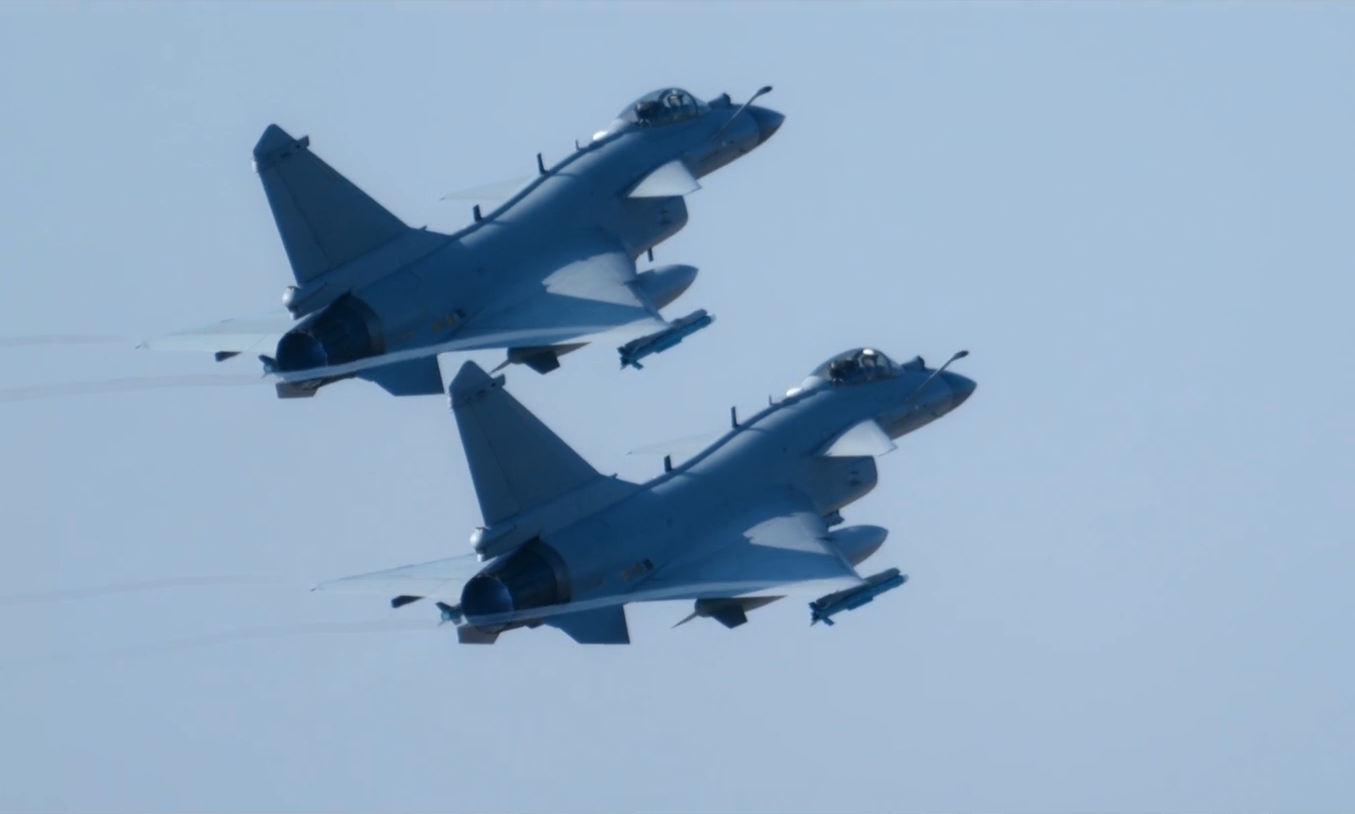In a documentary aired on China Central Television (CCTV) last week, the Chinese air force released footage of a simulated exercise where J-10C light fighters defeated stealth fighters with the help of early warning aircraft.
CCTV reported that a KJ-500A early warning aircraft identified the target's relative position and relayed the coordinates to a J-10C squadron. One of the fighters launched a medium-to-long-range air-to-air missile equipped with an active radar seeker.
While the missile was in flight, the target moved beyond the detection range of the launching aircraft's radar. The J-10C pilot then requested additional support. An unnamed early warning aircraft, possibly another KJ-500A, provided updated target parameters to guide the missile.
As the missile neared the stealth fighter, it activated its active electronically scanned array radar seeker and struck the target accurately. "Ground support crews confirmed the simulated target was shot down," CCTV said.
 |
A J-10C fighter jet during the exercise shown in the CCTV video released on 3/8. Photo: CCTV |
A J-10C fighter jet during the exercise shown in the CCTV video released on 3/8. Photo: CCTV
Chinese media attributed this success to the integration of various systems, including electronic warfare complexes, rather than relying on individual fighters. This reveals potential strategies for China to counter advanced American fighters like the F-22 and F-35.
"This is our first victory against a more modern fighter. Without support from the combat network, it would be nearly impossible to shoot down a stealth aircraft," said Major Xiao Nan, a J-10C pilot who participated in the exercise.
Another pilot affirmed that defeating stealth fighters with older jets "is not impossible," adding that future engagements will be "a war between the entire systems of both sides."
Pakistan reportedly employed a similar tactic during a conflict with India in May, enabling them to down at least one French-made Rafale fighter. Reuters, citing unnamed Pakistani officials, reported that the key was integrating J-10C fighters into a comprehensive combat network, including ground-based and airborne sensor systems.
At the heart of the network is Pakistan's domestically developed Data Link 17 system. It allows J-10C fighters to deactivate their radar and receive target data from early warning aircraft, reducing the risk of detection.
Indian officials told Reuters that India had attempted to establish a similar combat network but failed due to difficulties integrating aircraft acquired from various sources.
Pham Giang (Defense News, Reuters)












